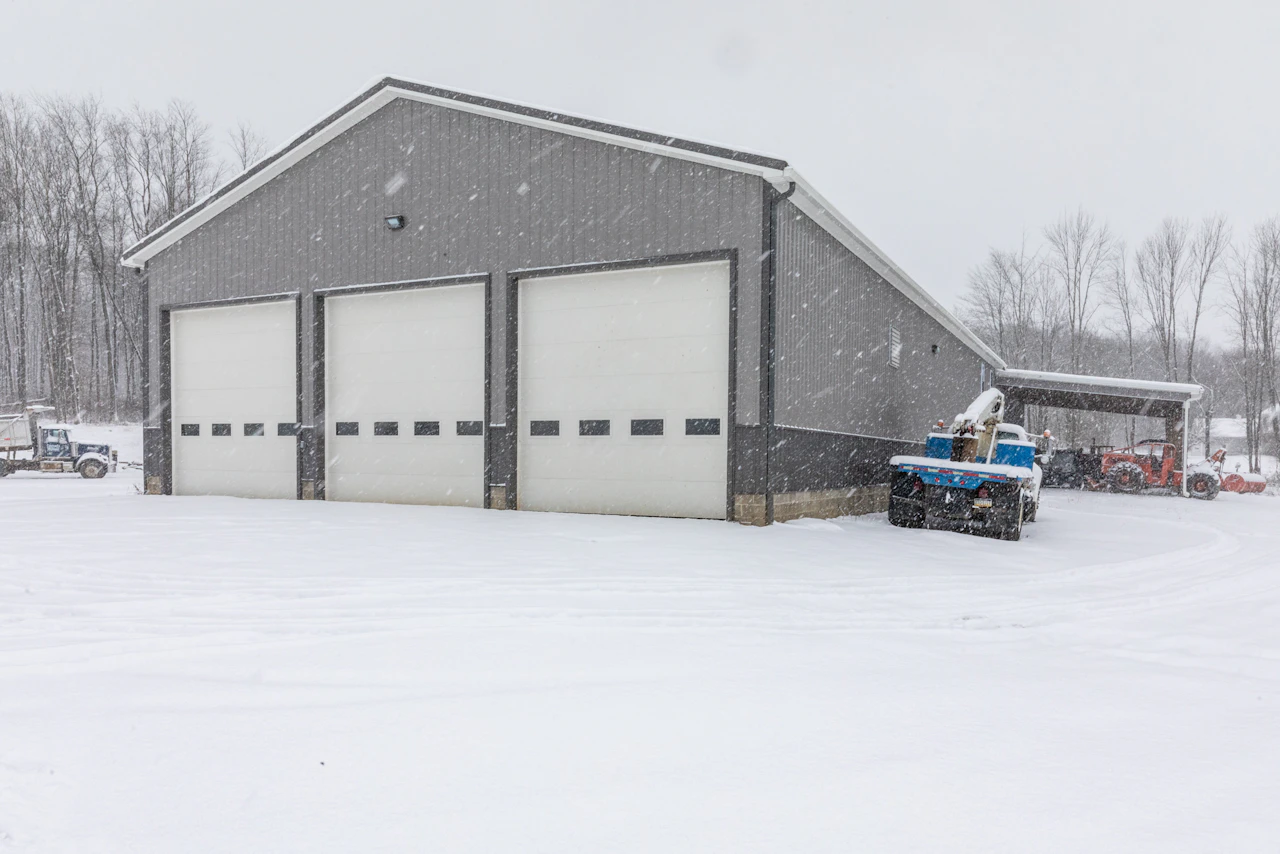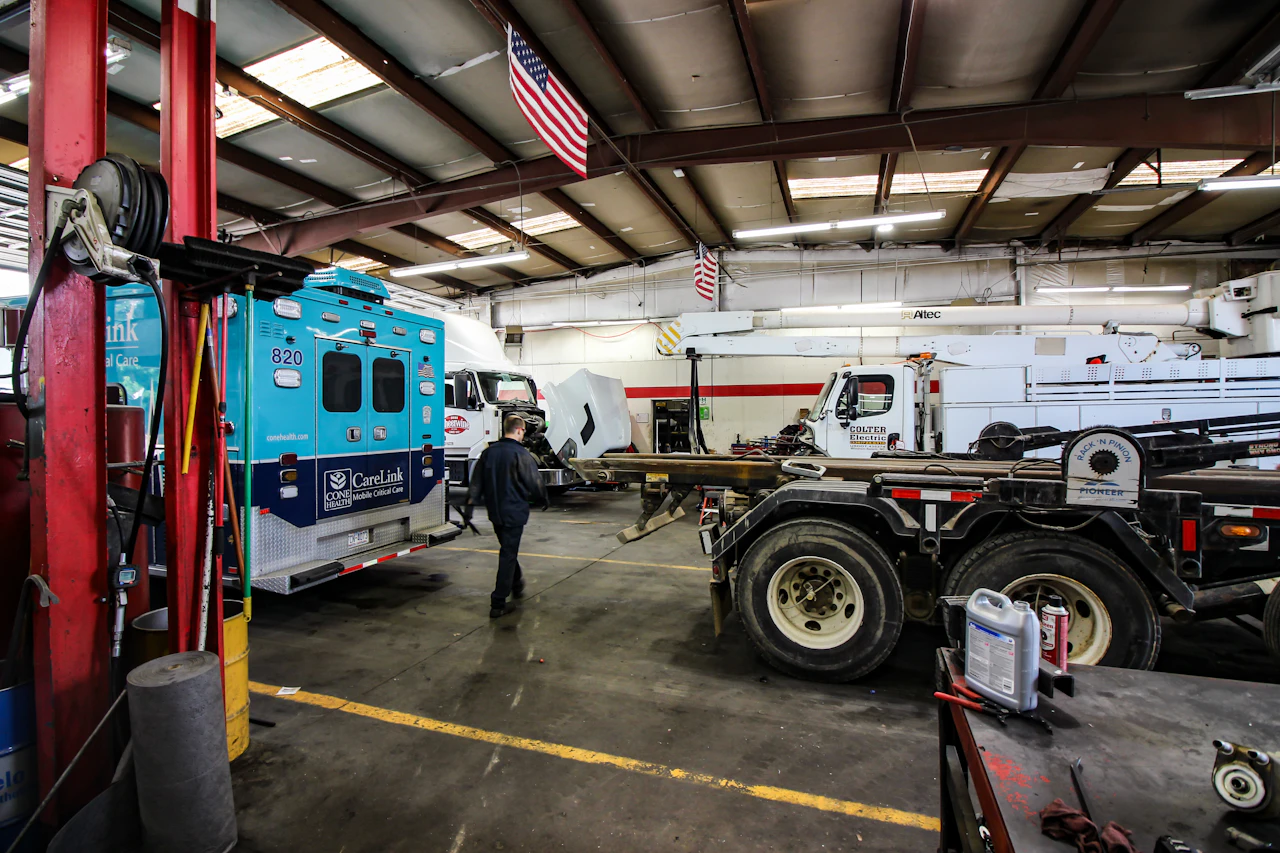Winter doesn’t have to flatten your schedule, but a handful of cold-weather repair errors can. In North Carolina, where mornings can nip at freezing and afternoons thaw out, marginal systems reveal themselves fast. The trick is planning for humidity, temperature swings, and night miles—not just snow days. Skip the guesswork and you’ll turn seasonal chaos into predictable PM. Let’s break down the cold-weather repair errors we see most and how to fix them before they bite.
#1. Guessing At Coolant Chemistry And Warm-Up Timing
One of the most common cold-weather repair errors is trusting the color of coolant instead of testing it. Use a refractometer to verify coolant freeze protection, and confirm you’re on the correct coolant chemistry—mixing types kills additive packs and water-pump seals.
Also, ensure that you pressure-test caps, inspect soft spots on hoses, and confirm thermostat opening temps so the engine reaches operating heat quickly. Slow warm-up fuels cylinder wash, raises soot, and pushes DOC/DPF temps in the wrong direction—classic knock-on effects of cold-weather repair errors you could’ve prevented with a five-minute test.
#2. Treating Batteries Like Consumables Instead Of Components
Another frequent set of cold-weather repair errors lives in the battery box. Cold cranking stresses every weakness, so prove health with conductance and a battery load test—don’t just read open-circuit voltage. Clean and torque lugs, then measure voltage drop during cranking on both positive and ground paths.
More than about half a volt total says you’re wasting cold cranking amps in the cables. Check the alternator output at the batteries with all winter loads on. Lots of dash faults are low-voltage events, the avoidable kind of cold-weather repair errors that cost an early-morning road call.
#3. Ignoring Water In The Air System Until Valves Freeze
Moisture doesn’t get enough respect, and that’s one of the sneakiest cold-weather repair errors. Service the air dryer service cartridge and purge valve, then drain tanks until discharge runs clean and dry.
Ice in lines causes slow release, dragging shoes, and uneven brake timing—problems that appear only when the road is slickest. Inspect lines where they rub or sag, and confirm heater circuits where spec’d. Leaving wet air in the system is how small cold-weather repair errors become big stopping-distance problems.
#4. Running “Summer Fuel” Filtration Into A Freeze
Every winter, fuel systems face a predictable set of cold-weather issues: overdue filter changes, water left sitting in separators, and no plan for sudden freezes. Replace both primary and secondary fuel filters together—it's inexpensive insurance against downtime. Drain water separators regularly and keep a quality anti-gel additive on hand.
If your truck is equipped with heated filter bases, verify that the heater circuits are working. Keep DEF sealed, clean, and ensure the DEF system heater is functioning properly. Neglecting fuel system hygiene leads to injector wear and more frequent DPF regenerations—both costly problems that quickly snowball into major cold-weather downtime.
#5. Neglecting traction, visibility, and driver ergonomics
Not all cold-weather repair errors live under the hood. Measure tread depth, set pressures cold, and address irregular wear before slick mornings magnify it. Refresh wiper blades, top washer fluid with winter mix, and align or clean lamps. This way, you get rid of hazed lenses and low beams that create glare in different weather conditions.
Confirm cabin heat, blend doors, and defroster performance—drivers who can see and stay warm make better decisions. Skipping these basics is one of the quieter cold-weather repair errors, but it shows up fast on dark interstates.
Steps to Eliminate the Biggest Errors Before Issues
- Verify coolant freeze protection with a refractometer; pressure-test the cap and hoses.
- Conduct a battery load test and record voltage drop during crank; clean grounds to shiny metal.
- Perform air dryer service, then drain tanks until discharge is clean and dry.
- Do fuel filter replacement for primary/secondary; test DEF system heater operation.
- Confirm headlamp aim and lens clarity; replace blades and use winter washer fluid.
These five bullets erase most cold-weather repair errors in one organized pass.
Why Small Decisions Cascade Into Big Winter Failures
Cold-weather repair problems often snowball from small issues. A weak thermostat slows engine warm-up, forcing extra post-injection fueling to reach catalyst light-off. This increases soot load, leading to more frequent DPF regenerations. Each additional regen raises exhaust temperatures, which can stress brittle wiring and crack aging charge-air pipes.
At the same time, undervoltage from corroded grounds may cause modules to reset, interrupting regeneration logic and triggering nuisance fault codes. What began as a few easy-to-fix issues can quickly escalate into a derate.
Stop the cascade before it starts: verify thermal control, maintain solid electrical connections, and protect air and fuel system integrity. Doing so eliminates multiple cold-weather failures in one step.
Avoid Cold Weather Repair Mistakes Now
Don’t let fixable cold-weather repair errors ambush your schedule. Bring your trucks to National Fleet Management for a measured winter program—coolant verified, batteries load-tested, air systems dried, fuel and DEF proven, lights aligned, and results documented. We’ll turn seasonal drama into routine PM. To learn more about winter maintenance, read our article on the type of coolant you should pick.

